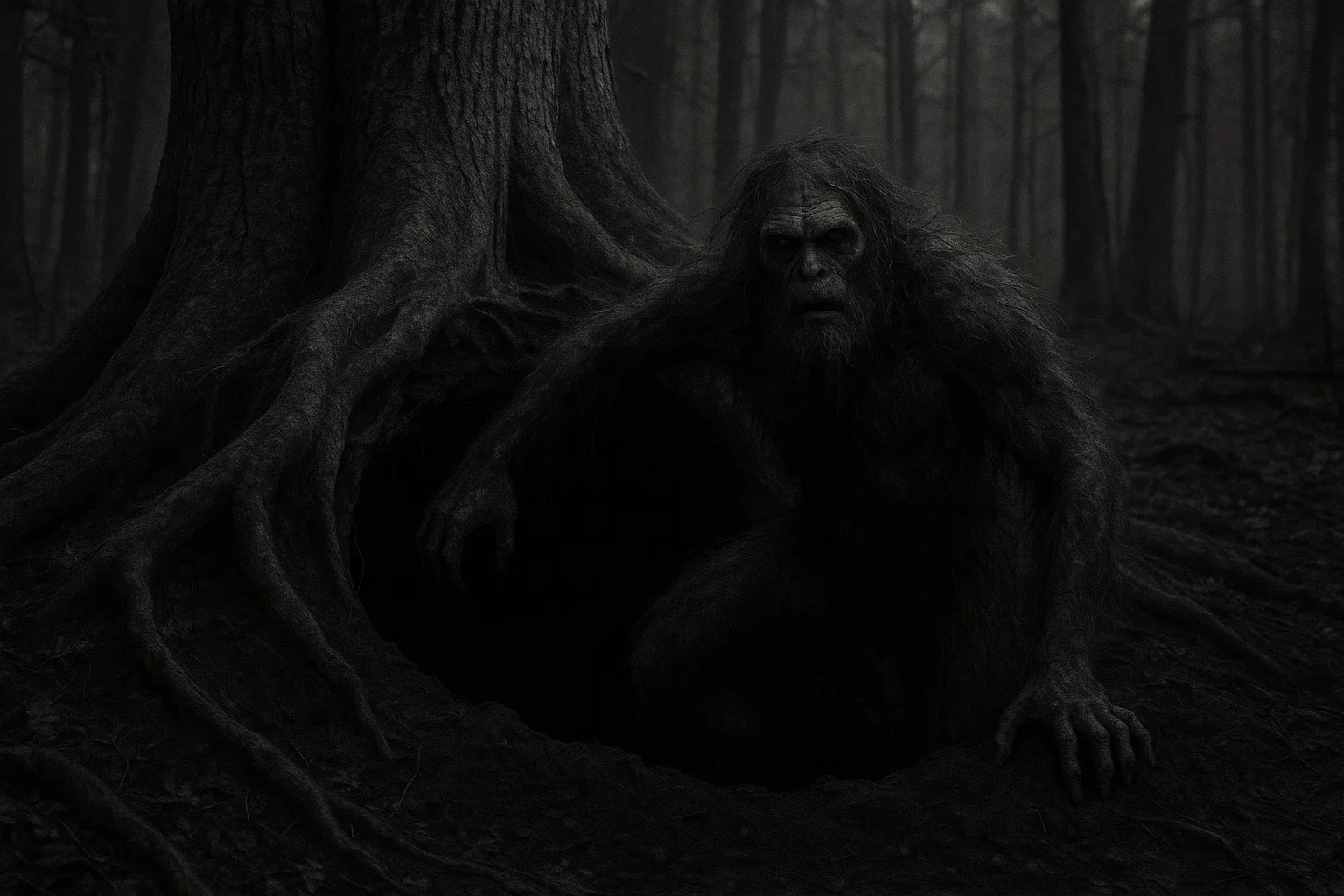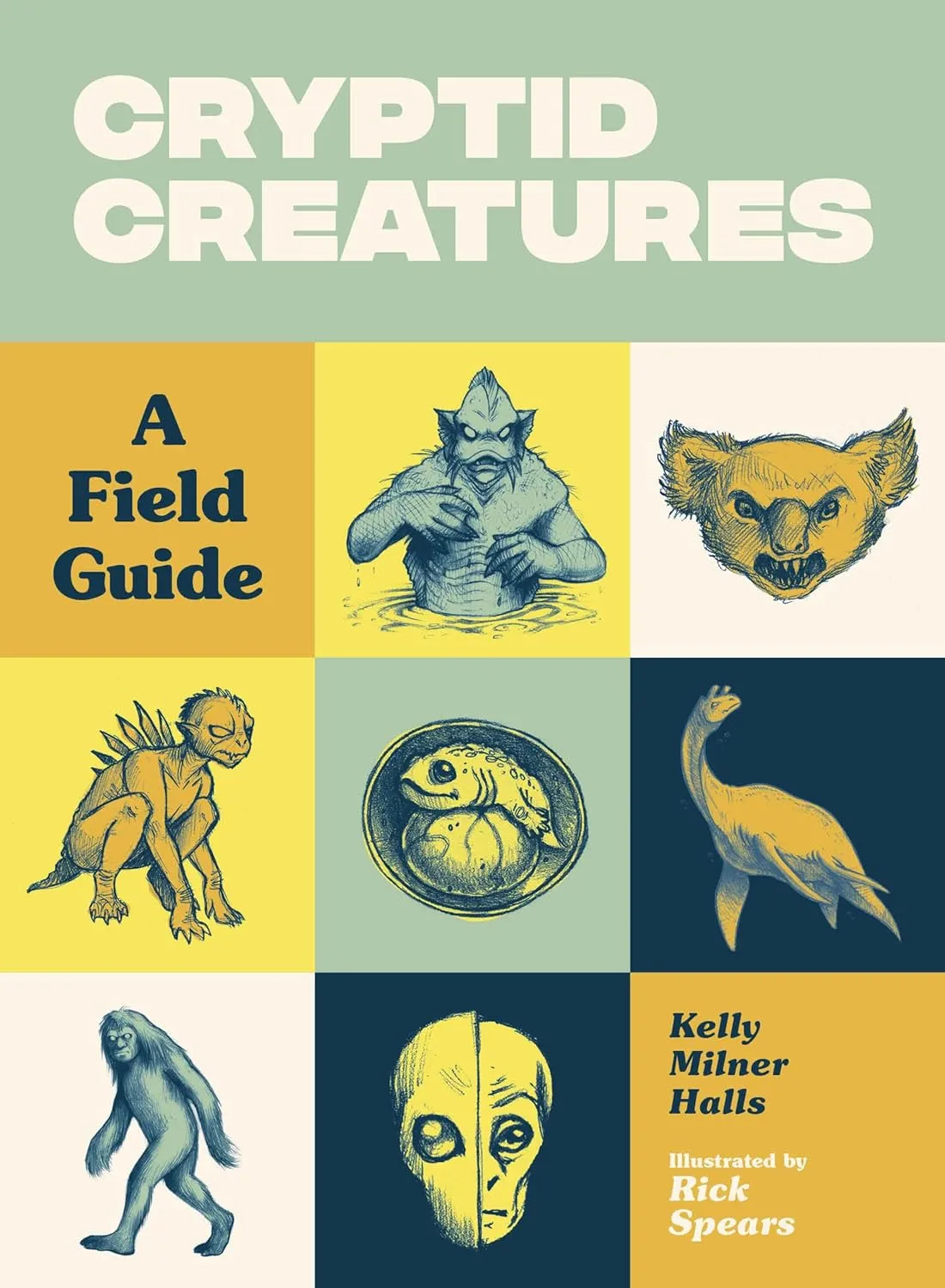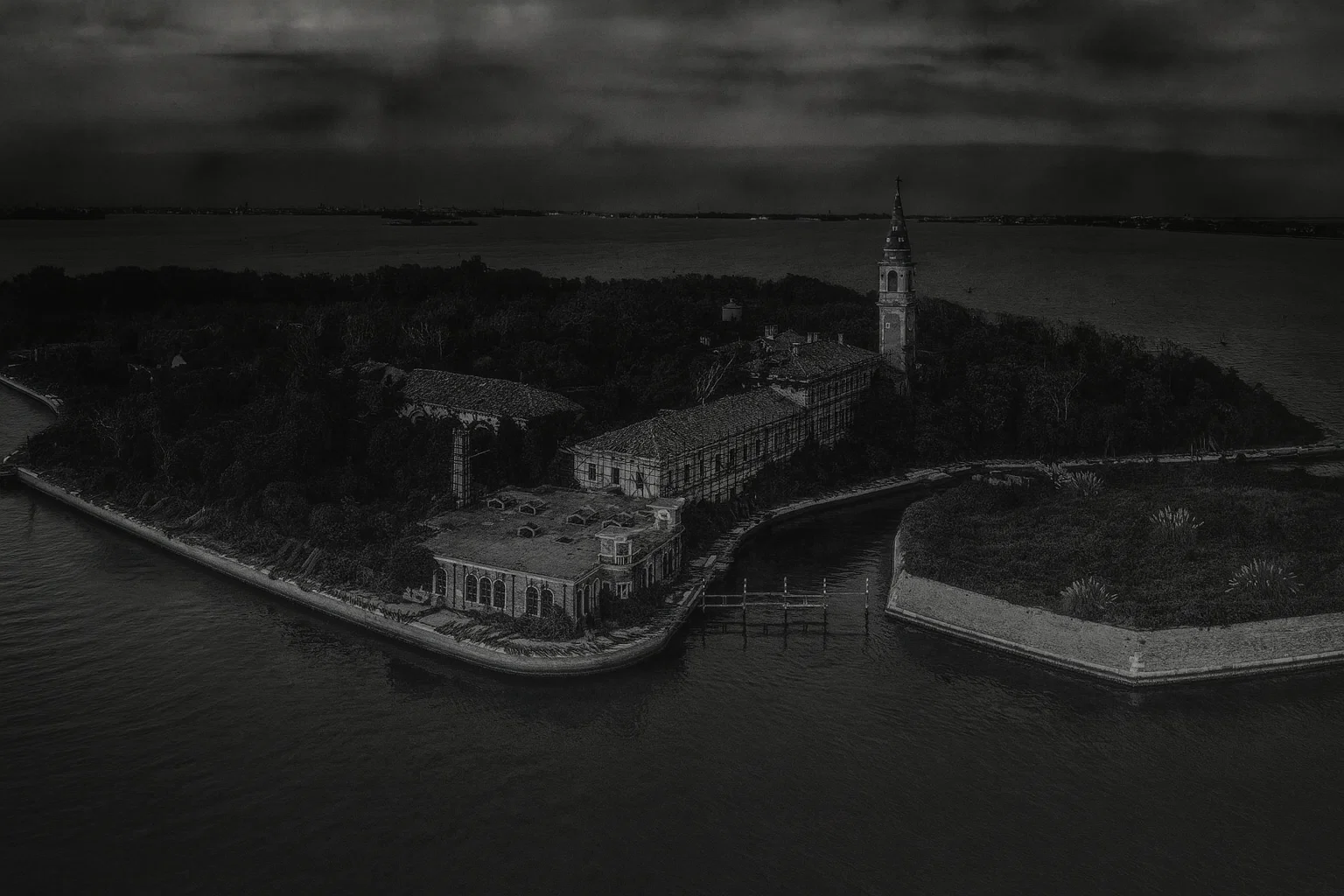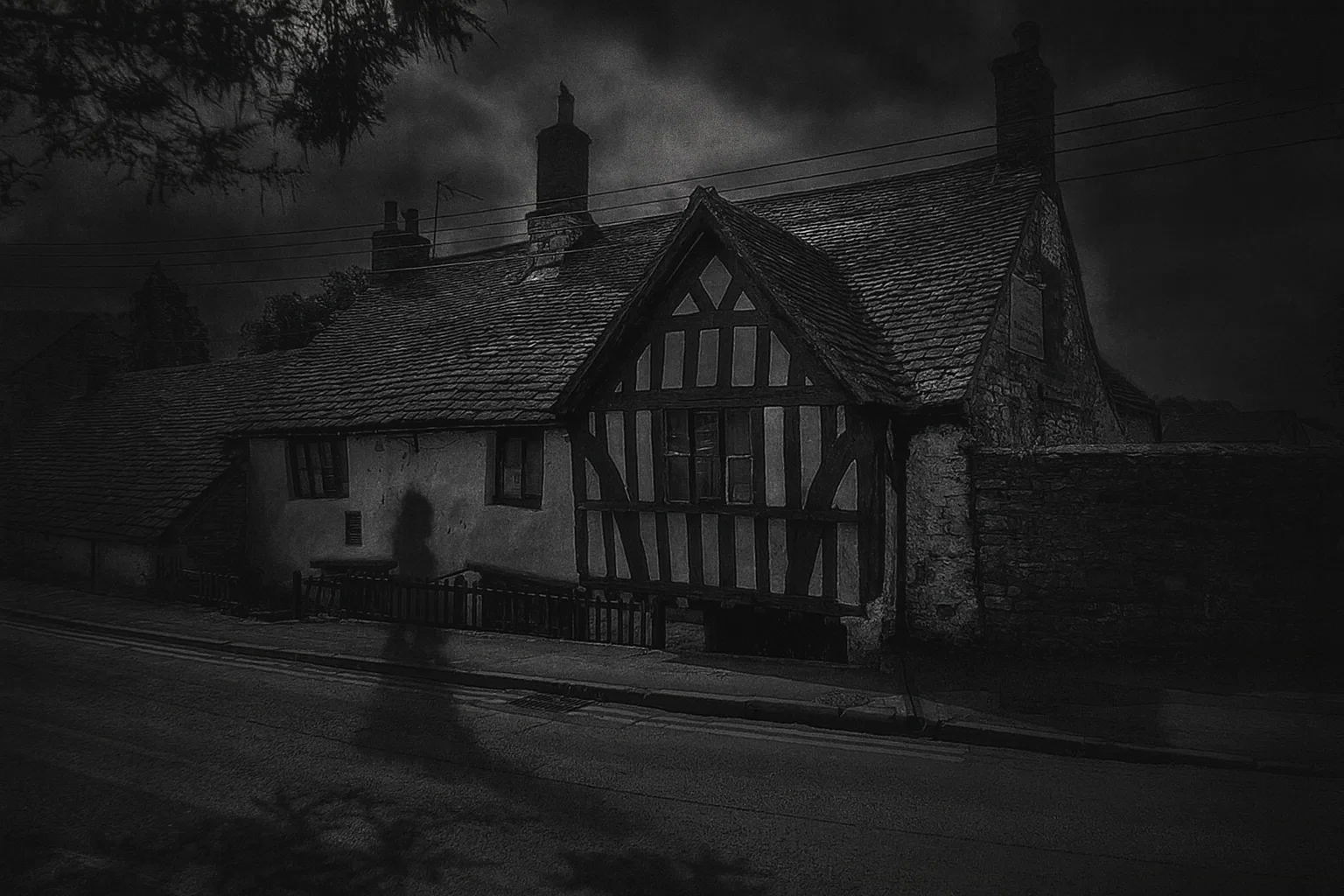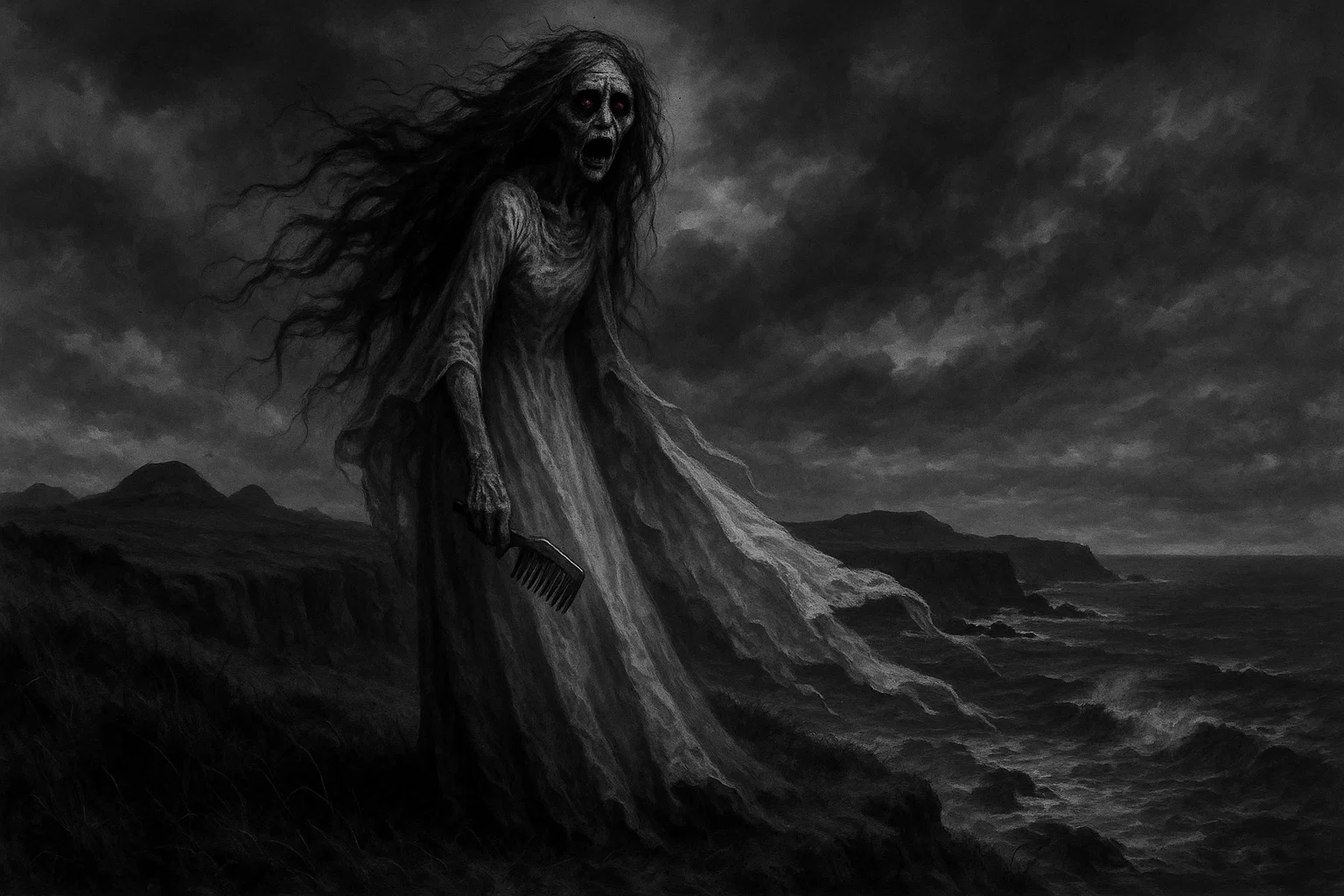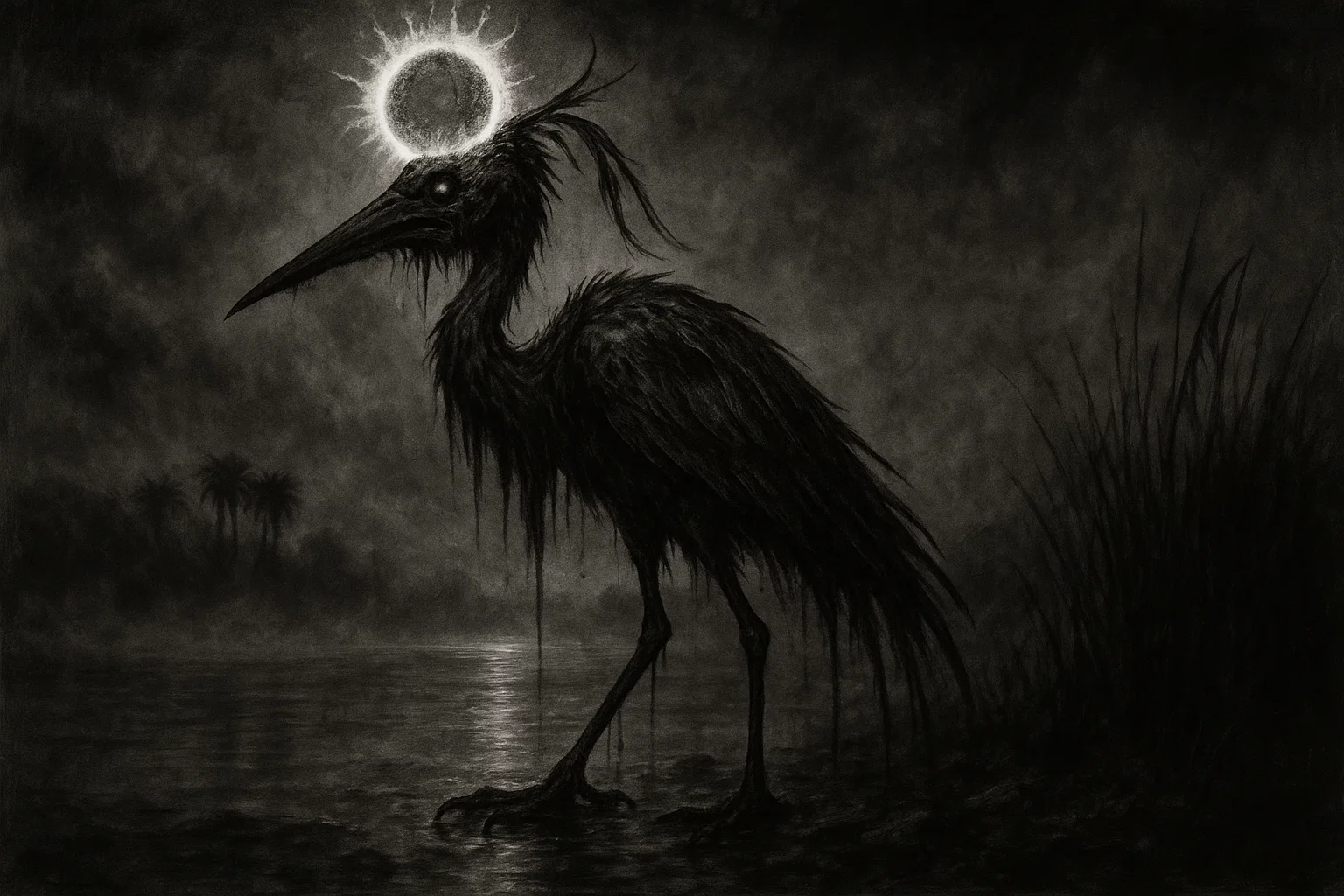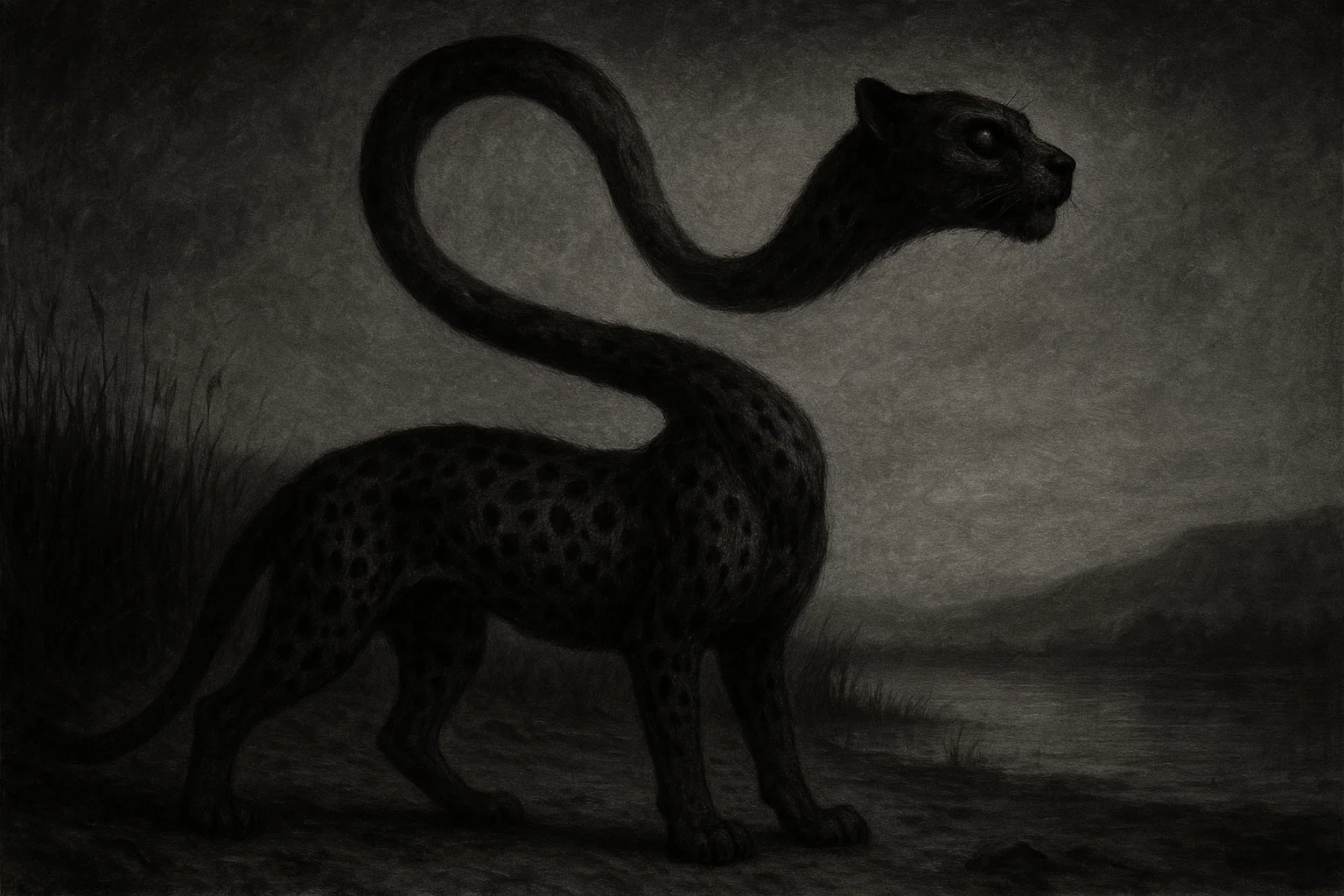The Downey Booger is a localized cryptid legend from Winston County, Alabama, in the southeastern United States.
The creature is consistently described as a mysterious, bipedal being that possesses traits of both a human and an animal, often equated with the broader American “wild man” or Bigfoot type of sightings. Its legend is rooted in a series of reported encounters dating back to the late 1800s.
Summary
Overview
| Attribute | Details |
| Name | Downey Booger |
| Aliases | Booger, Wood Booger (in the broader regional context), The Booger Man |
| Threat Level | Benign to moderately defensive/elusive; one instance of being shot at. |
| Habitat | Dense pine forest areas and rural roads of Winston County, Alabama. |
| Physical Traits | Creature bearing resemblance to both a human and an animal; bipedal, potentially hairy or covered in hair, possesses limbs and the ability to scream like a woman in distress. Estimated size is not explicitly stated but is large enough to frighten horses. |
| Reported Sightings | Winston County, Alabama, specifically a remote road near the Oscar Tittle house and a sand bed area. |
| First Documented Sighting | Late 1800s (circa 1890s) |
| Species Classification | Unknown; Speculatively humanoid or primate-like. |
| Type | Terrestrial, primarily elusive. |
| Behavior & Traits | Nocturnal or crepuscular activity, prone to startling witnesses, capable of locomotion on two feet, emits a high-pitched scream when distressed. |
| Evidence | Eyewitness accounts, trace amounts of blood found following a shooting incident. |
| Possible Explanations | Misidentified bear, hermit/feral human, regional folklore/boogeyman legend. |
| Status | Ongoing local mystery; actively discussed in regional folklore and cryptozoology circles. |
Who or What Is Downey Booger?
The Downey Booger is a significant component of local folklore in Winston County, Alabama, an area known for its rugged terrain and rural character.
The term “booger” in the Appalachian and Deep South regions is a vernacular term often used as a synonym for “monster” or “ghost” (a “haint“), generally referring to a menacing, strange entity. The “Downey” appellation derive directly from the family whose members were among the first to report an encounter with the creature.
Reported sightings describe the Downey Booger as a mysterious, bipedal creature that possesses characteristics of both a human and an animal.6 This composite description places it within the larger category of North American “wild man” or Bigfoot-type cryptids.
However, its specific local legend has given it a unique name and set of circumstances. The creature is generally perceived as a mysterious inhabitant of the region’s dense pine forests, emerging only to startle travelers on isolated rural roads at night.
The One Book That Turned “Monster Hunting” From Joke to Actual Science
Limited-Time: Up to 46% OFF!
Bigfoot, Loch Ness, Chupacabras, Mothman, Yeti, and dozens more – the original A-to-Z encyclopedia with 100+ fully researched cryptids, eyewitness accounts, expedition histories, and the evidence that made skeptics sweat. Loren Coleman and Jerome Clark’s 1999 classic that launched a thousand investigations.
What Does Downey Booger Look Like?
Descriptions of the Downey Booger are somewhat limited but consistent in the few major accounts. It is consistently referred to as a creature resembling both a human and an animal. This suggests a hybrid or transitional form, likely with a human-like upright posture (bipedal locomotion) combined with non-human, animalistic features, such as a covering of hair or exaggerated proportions.
Specific details regarding its height or weight are not explicitly provided in the original accounts. However, its physical presence was sufficient to cause trained thoroughbreds to panic, snort madly, and immediately flee in the opposite direction, suggesting a substantial size or a startling appearance.
In one significant account, the creature was shot and went limping away on three feet, implying an injury to one of its limbs.9 Furthermore, when wounded, the creature emitted a screaming sound like a woman in distress, indicating a capacity for loud, distinct vocalizations.
You may also enjoy:
Proctor Valley Monster: Is the San Diego Bigfoot a Minotaur?
September 24, 2025
Demon Foras: Secrets of the Ars Goetia
August 21, 2025
Habitat
The purported habitat of the Downey Booger is concentrated entirely within Winston County, Alabama. This region is characterized by its dense pine forests, rugged terrain, and a historically independent, rural population.
The area mentioned in the primary sightings is specifically a long stretch of road with dense pine forest and a few houses, featuring a sand bed area where the creature reportedly appeared.
The sand bed location is consistently cited as a site of sudden appearance, suggesting a preference for or residence near this specific topographical feature. The landscape would provide ample cover and seclusion, allowing a mysterious creature to avoid human detection.
The overall climate is humid subtropical, supporting a dense mix of hardwood and pine forests, offering a wide range of potential resources and subsistence opportunities.
The fact that the first reported sightings occurred in the late 1800s, an era when the area was likely even more remote and undeveloped, is consistent with a cryptid residing far from human settlements, only encountering people on isolated travel routes.
Downey Booger Sightings
The documented sightings of the Downey Booger are primarily rooted in a small number of incidents from the late 1800s in Winston County, Alabama:
| Date | Place | Witness Details | Description | Reliability |
| Late 1800s (circa 1890s) | Remote road in Winston County, Alabama, near the Oscar Tittle house and a sand bed. | Two cousins, John and Joe Downey, returning on horseback from a dance. | A strange-looking creature, bearing both the resemblance of a human and an animal, leaped out in front of them. The creature’s appearance spooked their horses, which panicked and ran in a wild stampede. | High: Primary source of the legend, two witnesses. |
| Late 1800s (approx. 3 months after the Downey sighting) | The sand bed area on the same road in Winston County. | A family returning home from a three-day church service. | The creature darted out from behind a clump of bushes, stood for a few seconds, and then quickly ran from sight. The incident caused panic among the children. | Medium: Multiple witnesses, though not all adult, confirming behavior. |
| Early Fall, Late 1800s (Moonlit Night) | Road in Winston County leading to the Commissary in Galloway, a mining town. | Jim Jackson, a local moonshiner, traveling in a two-horse wagon with barrels of liquor. | Jackson sensed he was being followed and saw a peculiar-looking creature waltzing on two feet behind his wagon. He fired a revolver twice, and the creature screamed like a woman in distress and went limping away on three feet. Traces of blood were later found leading away from the scene. | High: Single adult witness, but resulting in physical evidence (blood traces) and audible/behavioral details (screaming). |
This Book Turns the Entire United States Into One Giant X-Files Map
Limited-Time: Up to 38% OFF!
J.W. Ocker traveled the country collecting the weirdest local legends and marks the real-world locations where the Beast of Bray Road, the Dover Demon, the Wendigo, and hundreds more have been spotted. Part travel guide, part bestiary, 100% nightmare fuel.
John and Joe Downey (Winston County, Late 1800s)
The legend of the Downey Booger originated with the encounter of two cousins, John and Joe Downey. The two men were returning home on horseback from a dance held at the Oscar Tittle house. Their route involved a long stretch of road through dense pine forest, with only two houses along the way.
As they reached a specific spot, a sand bed, a strange-looking creature, bearing both the resemblance of a human and an animal, suddenly leaped out in front of them. The creature’s appearance caused their trained thoroughbreds to react violently, snorting madly and almost throwing their riders before turning and fleeing in a wild stampede.
After the men regained control, they attempted to proceed. Still, their horses refused to move when they again approached the sand bed, forcing the cousins to take a significantly longer route home through the nearby town of Lynn. This was the encounter that gave the creature its name.
You may also enjoy:
Glasya-Labolas: The Griffin-Winged Demon of Blood and Wisdom
August 21, 2025
Domovoi: The Creepy Household Spirit
September 11, 2025
The Lake Tanganyika Monster: A Living Prehistoric Beast?
November 10, 2025
Who Is Marbas? The Demon of the Ars Goetia
August 25, 2025
Jim Jackson’s Encounter (Winston County, Early Fall, Late 1800s)
The most detailed and dramatic account involves a local moonshiner named Jim Jackson. He was transporting barrels of homemade moonshine via a two-horse wagon to a commissary in the mining town of Galloway. While jogging along the road, Jackson sensed he was being followed.
Glancing over his right shoulder, he saw a peculiar-looking creature waltzing on two feet behind his wagon. Jackson, prioritizing the safety of his liquor and deciding against trying to outrun the beast with his mules, retrieved a gun from his wagon seat. He aimed and fired twice at the pursuing entity.
The creature reacted to the shots by emitting a loud scream like a woman in distress and was then seen limping away on three feet. Following this event, a local posse was formed to investigate. They searched the forest and reported finding traces of blood leading from the sand bed to a distant cliff, supporting Jackson’s claim of having wounded the creature.
Evidence & Investigations
The evidence supporting the existence of the Downey Booger is limited to eyewitness accounts and trace evidence resulting from a deliberate attack by a human witness. The primary physical evidence is the traces of blood found following Jim Jackson’s shooting of the creature.
This blood, reportedly discovered by a local posse, led from the site of the shooting to a distant cliff. This is the only physical evidence of an anomalous entity mentioned in the original accounts. No footprints, hair samples, scat, or photographic evidence from the period is reported.
Formal scientific or cryptozoological investigations into the original late 1800s sightings are nonexistent, as the concept of cryptozoology was not established at the time, and the story remained a piece of local folklore.
Modern interest has resulted in recent, often low-budget, documentary films and podcast coverage, which may include contemporary investigations or re-examinations of the original locations and family histories. These contemporary efforts typically focus on the historical veracity of the accounts and local oral tradition, rather than yielding new physical evidence.
The existing evidence is circumstantial and non-peer-reviewed, relying entirely on the credibility of the original witnesses and the subsequent community response.
People Swore They Saw Something Impossible… This Book Shows You the Photos, Tracks, and DNA
Limited-Time: Up to 18% OFF!
Gorgeous full-color illustrations meet hard evidence: hair samples that don’t match any known animal, sonar hits in Loch Ness, night-vision footage, and survivor testimonies. Kelly Milner Halls separates hoax from holy-crap-this-might-be-real for every major cryptid still out there.
Theories
The localized and specific nature of the Downey Booger sightings allows for several theories tailored to the region and the descriptions provided.
Misidentified American Black Bear
The Appalachian and Southern regions of the United States are well-documented habitats for the American Black Bear (Ursus americanus). This theory proposes that the creature encountered was a black bear walking upright.
Black bears are known to stand on their hind legs, particularly when startled or when scanning an area. From a distance or in poor lighting, a bear in this posture could easily be misidentified as a bipedal creature bearing both the resemblance of a human and an animal.
The screaming like a woman in distress may be attributed to the variety of vocalizations bears can make when injured or frightened. An injured bear would naturally limp away on three legs, consistent with Jim Jackson’s account, and the blood traces would confirm the injury to a known animal.
Feral Human or Local Hermit
An alternative explanation for the human-animal resemblance is the misidentification of a feral human or a local hermit living in extreme isolation.
The late 1800s in rural, rugged areas of Alabama would have offered significant opportunities for individuals to live completely off the land and avoid society.
Such an individual, dressed in rags or animal skins, or simply having an extremely unkempt appearance, could easily be seen as an ape-like or beastly entity, especially when startled on an isolated road at night. The creature’s ability to walk on two feet is consistent with a human, and the scream could be a human cry of pain.
Appalachian/Southern Wildman Folklore
The term “booger” is a regional Appalachian English term for a ghost or monster, and “wood booger” is a generic regional name for a Bigfoot-type creature.
This theory suggests that the Downey Booger is an example of a local wildman legend crystallized by a specific set of incidents. The original encounters, particularly the one involving the Downey cousins, may have involved a frightening but known animal, or even a hoax, which was then interpreted and amplified through the existing cultural lens of the “booger” entity.
The name “Downey Booger” would thus be the specific Winston County manifestation of a pan-Appalachian belief in hairy, mysterious men of the woods.
You may also enjoy:
The Legend of Umibozu: Japan’s Most Frightening Ocean Yokai
September 10, 2025
Who Is Leraje, the Demon of Gangrene and Battle?
August 22, 2025
Why the Kitsune Is the Most Dangerous Yokai in Japanese Folklore
September 10, 2025
9 Haunted Houses in Arizona That Hold Terrifying Secrets
October 7, 2025
Comparison with Other Similar Cryptids
| Cryptid Name | Location | Physical Traits | Primary Type | Behavior & Traits |
| Bigfoot (Sasquatch) | Pacific Northwest, North America | Large, 6–9 ft tall, covered in dark hair, bipedal, ape-like. | Terrestrial | Elusive, nocturnal, known for loud calls and throwing rocks. |
| Skunk Ape | Florida, Gulf States, USA | Large, hairy, reddish-brown/black, similar to Bigfoot, but notorious for a foul odor. | Terrestrial | Odoriferous, swamp/marsh dweller, shy. |
| Fouke Monster | Fouke, Arkansas, USA | Approximately 7 ft tall, covered in long, dark hair, bipedal, strong odor. | Terrestrial | Aggressive, nocturnal, often seen near Boggy Creek. |
| Yowie | Australian Wilderness | Large, gorilla-like, 6–12 ft tall, covered in dark, matted hair. | Terrestrial | Reported to be violent, emits growls and howls. |
| Jersey Devil | Pine Barrens, New Jersey, USA | Bipedal, kangaroo-like body, goat or horse head, leathery wings, horns. | Airborne/Terrestrial | Emits a high-pitched scream, predatory on livestock. |
| Momo (Missouri Monster) | Louisiana, Missouri, USA | 7 ft tall, dark hair, large pumpkin-shaped head, putrid smell. | Terrestrial | Territorial, known for a powerful roar, aggressive. |
| The Wampus Cat | Appalachian Mountains, USA | Feline-human hybrid, typically a cat-like woman, sometimes a large cat. | Terrestrial | Nocturnal, known for a mournful cry, sometimes described as a shapeshifter. |
| The Wood Booger | Southwest Virginia, USA | Sasquatch-like creature, large, hairy, bipedal. | Terrestrial | Elusive, regional synonym for Bigfoot/Booger Man. |
| The Grassman | Ohio, USA | 8 ft tall, covered in light to dark-colored hair, nests in the woods. | Terrestrial | Avoids contact, known to leave structures or nests made of grass/sticks. |
| The Knobby Creature | Knobby Mountain, PA, USA | Humanoid, dark skin/hair, sometimes described as having a pointed head. | Terrestrial | Nocturnal, quick movements, mostly harmless. |
Is Downey Booger Real?
The existence of the Downey Booger is a matter of regional folklore and continuing speculation. The core of the legend is supported by a small number of eyewitness accounts from the late 19th century in a remote part of Alabama, culminating in a reported confrontation that left physical traces (blood).
However, no definitive scientific or cryptozoological confirmation of the creature’s existence has ever been established.
Skeptical analyses tend to favor the theories of misidentification, suggesting the creature was likely an American Black Bear exhibiting bipedal behavior, which would fully account for the animal-human resemblance, the panic-inducing size, and the limping and blood evidence after being shot.
The cultural impact of the Downey Booger is clear, persisting as a unique element of Winston County’s heritage and contributing to the broader tapestry of Southern cryptid lore.
Ultimately, the Downey Booger remains an unresolved mystery, maintained primarily by the historical accounts and the compelling nature of its local legend.

